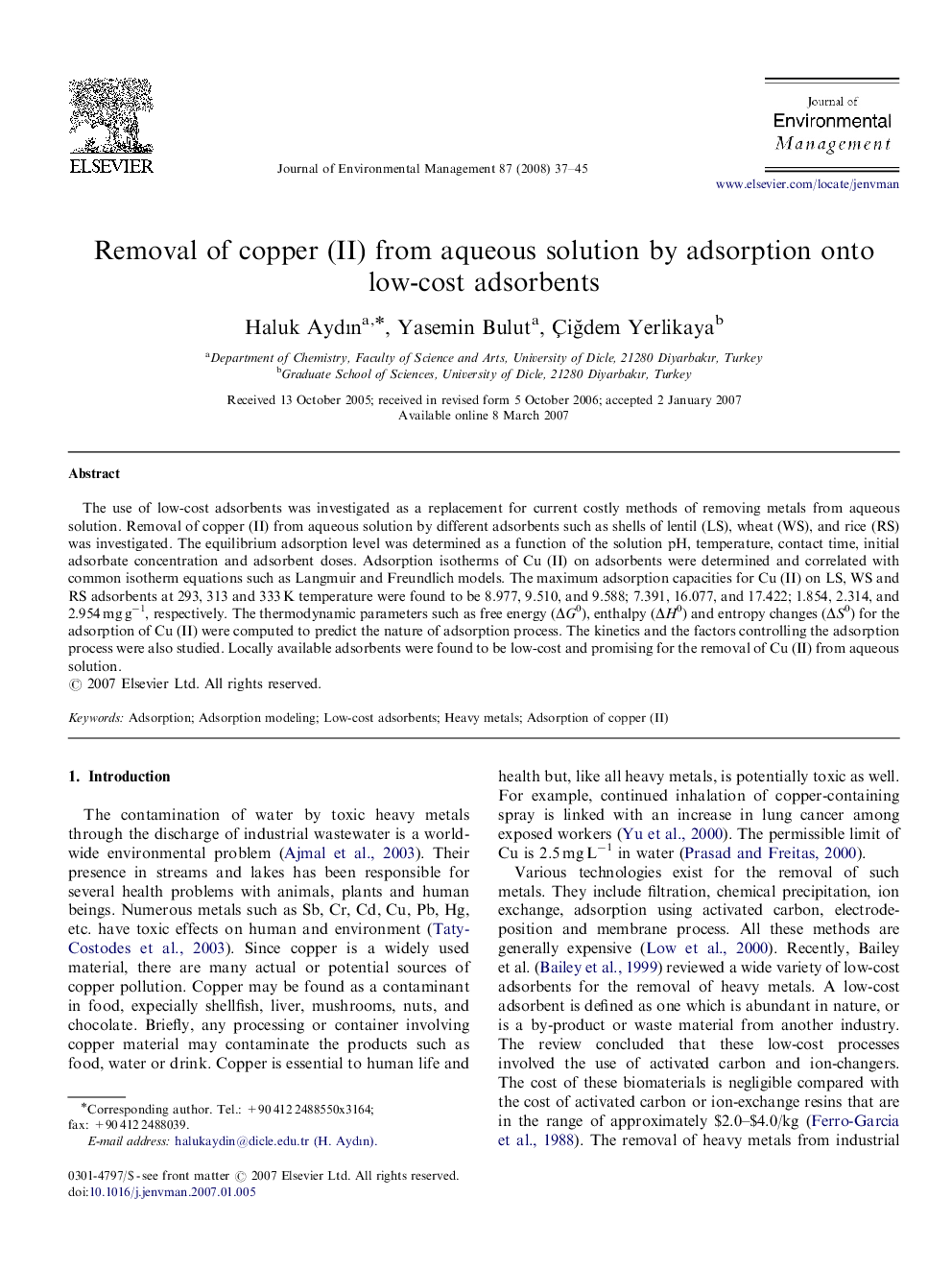| Article ID | Journal | Published Year | Pages | File Type |
|---|---|---|---|---|
| 1058142 | Journal of Environmental Management | 2008 | 9 Pages |
The use of low-cost adsorbents was investigated as a replacement for current costly methods of removing metals from aqueous solution. Removal of copper (II) from aqueous solution by different adsorbents such as shells of lentil (LS), wheat (WS), and rice (RS) was investigated. The equilibrium adsorption level was determined as a function of the solution pH, temperature, contact time, initial adsorbate concentration and adsorbent doses. Adsorption isotherms of Cu (II) on adsorbents were determined and correlated with common isotherm equations such as Langmuir and Freundlich models. The maximum adsorption capacities for Cu (II) on LS, WS and RS adsorbents at 293, 313 and 333 K temperature were found to be 8.977, 9.510, and 9.588; 7.391, 16.077, and 17.422; 1.854, 2.314, and 2.954 mg g−1, respectively. The thermodynamic parameters such as free energy (ΔG0), enthalpy (ΔH0) and entropy changes (ΔS0) for the adsorption of Cu (II) were computed to predict the nature of adsorption process. The kinetics and the factors controlling the adsorption process were also studied. Locally available adsorbents were found to be low-cost and promising for the removal of Cu (II) from aqueous solution.
